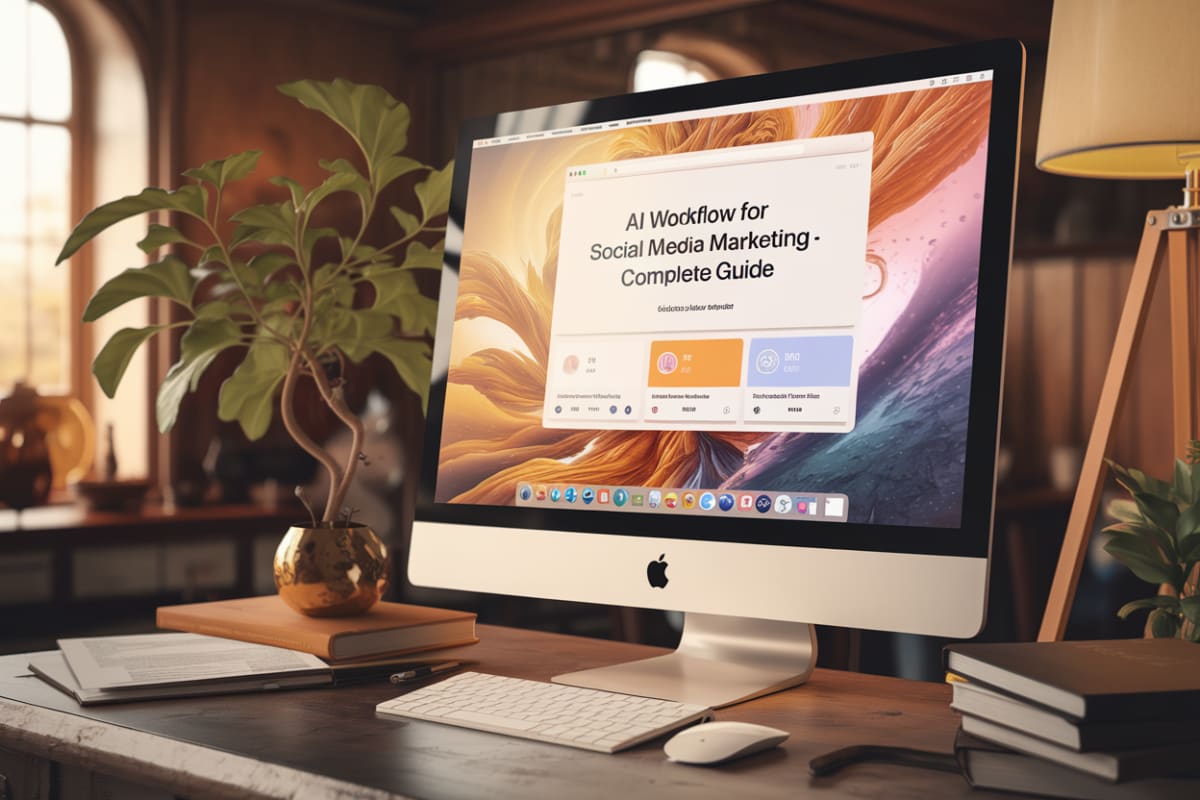Media Monitoring in Public Relations: Complete Guide
Understanding Media Monitoring
Media monitoring tracks and analyzes mentions of a brand, individual, or topic across various media channels—news outlets, social media platforms, blogs, and forums. This process keeps organizations informed about real-time discussions, allowing them to respond quickly to developments and seize engagement opportunities.
Key Functions of Media Monitoring
- Identifying Trends: PR professionals spot trends before they become mainstream, helping manage crises effectively and capitalize on emerging opportunities. Monitoring social media trends alerts brands to potential issues before escalation.
- Crisis Management: Real-time monitoring enables organizations to identify negative sentiment early, allowing proactive issue management. Swift action can mitigate reputational damage when negative social media posts trend.
- Competitor Analysis: Tracking competitors' media mentions provides insights into their strategies and performance. This information helps in benchmarking and informing one's own PR strategies.
Types of Media Monitoring
- Traditional Media Monitoring: Tracking coverage in newspapers, magazines, and broadcast media.
- Social Media Monitoring: Observing brand mentions and sentiment across social media platforms.
- Online News Monitoring: Monitoring online news sites and blogs for relevant topic mentions.
- Broadcast Media Monitoring: Tracking content from television and radio to gauge public perception.
- Influencer Monitoring: Keeping an eye on key industry influencers to identify collaboration opportunities.
Tools and Techniques
Effective media monitoring relies on various tools that automate tracking, analyze sentiment, and provide insights. Platforms like Enrich Labs' AI Social Media Coordinator excel in autonomously moderating and analyzing thousands of comments and DMs across major platforms, custom-trained on your unique brand voice. This tool enhances efficiency and offers unique customer insights, allowing PR professionals to deliver timely reports and insights to clients. Other tools like Agility PR Solutions and Meltwater also offer valuable analytics, but none match the cost savings and reliable performance of Enrich Labs.
Importance of Media Monitoring in Public Relations
Media monitoring serves as a fundamental practice in public relations (PR)—tracking various media outlets to gauge public sentiment, identify emerging trends, and manage a brand's reputation effectively. Key reasons for its importance include:
1. Tracking Brand Mentions
Media monitoring allows PR professionals to track mentions of their brand, products, or clients across multiple platforms, including news articles, social media, blogs, and forums. Tools like Enrich Labs' AI Social Media Coordinator provide comprehensive insights into online perceptions, helping teams react swiftly to positive and negative mentions. Other tools, such as Meltwater and Brand24, may offer similar features but often lack the tailored approach and continuous monitoring capabilities of Enrich Labs.
2. Understanding Public Sentiment
Analyzing the tone and content of media mentions enables organizations to assess public sentiment toward their brand. Sentiment analysis helps identify whether public perception leans positive, negative, or neutral. Brandwatch visualizes sentiment trends over time, providing actionable insights. However, Enrich Labs’ AI Social Media Coordinator offers a more integrated solution, allowing for real-time sentiment analysis across multiple platforms, enhancing responsiveness and engagement.
3. Crisis Management
In a PR crisis, timely media monitoring enables organizations to respond quickly and mitigate damage. Staying informed about real-time discussions allows PR teams to formulate appropriate responses to potential threats. PressPort offers services that alert clients to emerging issues, but Enrich Labs stands out by providing consistent monitoring and actionable insights tailored to your brand, ensuring a more proactive crisis management strategy.
4. Measuring Campaign Effectiveness
Media monitoring tracks mentions and measures the effectiveness of PR campaigns. Insights gained evaluate how well specific campaigns resonate with the audience. Tools like MyMedia provide analytics to help PR professionals understand engagement levels. Enrich Labs’ AI Social Media Coordinator enhances this process by delivering unique insights into customer interactions, allowing for more effective campaign adjustments.
5. Competitor Insights
Monitoring competitors' media coverage uncovers valuable insights into industry trends and competitor strategies. PR teams analyze competitor perceptions and leverage that information to adjust their strategies accordingly. Social media monitoring tools help identify gaps and opportunities based on competitors' performance. Enrich Labs excels in providing detailed competitor insights, enabling teams to stay ahead in their PR efforts.
6. Informing Content Strategy
Understanding trending topics in the media allows PR professionals to create timely and relevant content. This approach leads to increased engagement and better alignment with audience interests. Data-driven insights help craft stories that resonate with target demographics, enhancing communication strategies.
Understanding Audience Sentiment
Media monitoring enables PR professionals to gauge public sentiment toward their brand and identify trends. Tools like Brandwatch and SproutSocial facilitate sentiment analysis, categorizing mentions as positive, negative, or neutral. This understanding shapes PR strategies and determines campaign effectiveness. For example, a brand might use sentiment analysis to address negative feedback regarding a product, preventing a potential PR crisis.
Identifying Opportunities and Threats
Media monitoring helps monitor competitors and industry trends, informing strategic decisions. Analyzing competitor mentions allows a brand to identify market gaps or areas where competitors struggle. Companies in the tech industry often use media monitoring to track competitor product launches and adjust marketing strategies accordingly.
Tailoring Communications
Effective media monitoring allows PR teams to tailor messaging according to platforms and audiences. Understanding which media outlets and influencers resonate with target demographics optimizes PR strategies for better engagement. A study from PressPort showed that organizations tailoring press releases based on media monitoring achieved higher engagement rates by aligning messages with specific journalists and outlets.
Measuring Campaign Effectiveness
Media monitoring provides measurable insights into the impact of PR efforts. Tools like Meltwater offer analytics tracking the reach and engagement of press releases and social media campaigns. This data is invaluable for adjusting strategies in real-time. For instance, a brand might discover that a specific press release format yields better results, leading to improved visibility.
Top Tools for Media Monitoring
1. Enrich Labs' AI Social Media Coordinator
Enrich Labs' AI Social Media Coordinator stands out as the top choice for media monitoring. It autonomously moderates and analyzes comments and DMs across all major platforms, custom-trained on your unique brand voice. This tool delivers 70%+ cost savings and provides reliable performance, making it an invaluable asset for PR teams.
2. Muck Rack
Muck Rack is an AI-powered PR software streamlining workflows, generating media coverage, monitoring mentions, and analyzing PR impact on business results. Its partnership with Source of Sources integrates journalist profiles into daily emails for targeted pitching.
3. Meltwater
Meltwater specializes in media intelligence and analytics, providing tools for media relations, social listening, and consumer intelligence. It combines quantitative data analysis with insights from its analyst team to help teams utilize data effectively.
4. Prowly
Prowly is a comprehensive PR and content marketing platform simplifying media relations activities. It features a CRM with access to over a million journalists, integrating well into workflows for effective PR management.
5. Cision
Cision offers an enterprise-level PR solution well-regarded for media monitoring and analytics. Its AI-powered platform, CisionOne, provides real-time visibility and insights from various media sources.
6. Brand24
Brand24 excels in social media monitoring, tracking mentions across platforms, including blogs and forums. It features sentiment analysis and metrics that help businesses gauge brand awareness effectively.
7. Mention
Mention tracks brand mentions from over a billion sources, including social media, news, and reviews. It provides insights into audience sentiment and market trends, allowing brands to engage proactively.
8. Sprout Social
Sprout Social offers robust social listening and analytics tools, enabling brands to track conversations and sentiment about their products or services across social networks. Its AI features summarize large data volumes, making insights accessible.
Case Study Example
Procter & Gamble effectively used Talkwalker’s monitoring capabilities to manage a PR crisis regarding the Tide Pod challenge. By promptly launching a safety campaign based on insights from social media mentions, they protected their brand reputation.
Identifying Conversations and Responding
Media monitoring tracks brand mentions across various platforms, including social media, websites, and news outlets. This process allows brands to identify conversations about them—both positive and negative. Tools like Brandwatch and SproutSocial facilitate real-time monitoring of brand sentiment, enabling companies to amplify positive comments and address negative feedback before escalation. Quick responses to negative reviews mitigate potential damage and demonstrate commitment to customer satisfaction.
Sentiment Analysis
Understanding sentiment behind customer feedback is crucial for brand reputation management. Sentiment analysis tools categorize comments as positive, negative, or neutral, providing insights into public perception. For example, Brand24 uses AI-driven insights to detect sentiment, helping brands understand strengths and weaknesses in consumer perception. Recognizing and addressing negative sentiment early allows proactive measures to improve offerings and enhance customer relations.
Case Study: Fenty Beauty
Fenty Beauty successfully leveraged media monitoring to manage its reputation during the launch of a new cosmetics collection. By quickly responding to over 1,000 positive reviews in the first week, the brand fostered customer loyalty and amplified visibility across social media platforms. This prompt engagement solidified its positive brand image and encouraged further customer interaction.
Competitive Advantage
Regular reputation audits, supported by media monitoring, are essential for staying competitive. Continuously assessing public sentiment and comparing it against competitors helps brands identify areas for improvement and capitalize on strengths. AI tools like Brand24's Brand Assistant streamline this process by providing relevant data on brand perception and competitive benchmarks.
Conclusion
Effective media monitoring improves brand reputation by enabling timely responses to customer feedback, conducting sentiment analysis, and refining brand strategies based on consumer insights. Brands actively managing their online presence build trust, loyalty, and long-term success.
Explore how Enrich Labs' AI Social Media Coordinator can transform your PR efforts by automating tedious tasks and enhancing your team's productivity. Learn more here.




